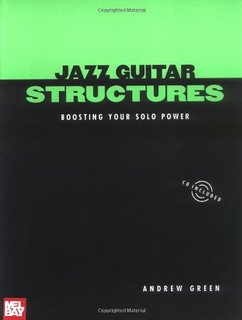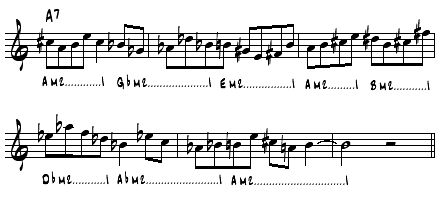Jazz Guitar Structures – Major 2


Jazz Guitar Structures
Andrew Green
Paperback: 136 pages with Online Audio
E-book with Online Audio
Publisher: Microphonic Press
ISBN: 0-9700576-0-1
A Major triad with the second degree added is referred to in this book as MA+2:

The second degree is added to create a four-note group that is easy to phrase with and move around. MA+2s lay well on the neck of the guitar, and can be used to reharmonize melodic lines in a readily identifiable way. This structure was used extensively by John Coltrane on the tune Giant Steps, and is an indispensable part of the vocabulary of jazz.
Here’s an example of a line created with MA+2s:

There is a sense of unity and coherence to this line, due in large part to use of the same structure. It sounds interesting because you get a surprise from the implied motion contrary to the underlying chords. The structures also create tension by introducing #4 on the G7 and #5 on the CMaj7. Resolution by half step between each chord also helps make the line strong.
Since MA+2s contain the notes of a triad, you can easily use them to superimpose chords or tonalities. With this structure, it is possible to play a strong melody without always resolving by half step:

The above melody creates tritone substitutions for the A7 and D-7. Notice that the “wrong” note (F#) on the G7 chord does resolve by half step to a strong chord tone on CMaj7.
MA+2s can also be used to superimpose tonalities over static (modal) harmony, although the criteria for deciding where to build the structures are different from those for moving chord progressions. For example:

More lines created with the MA+2 structure:




